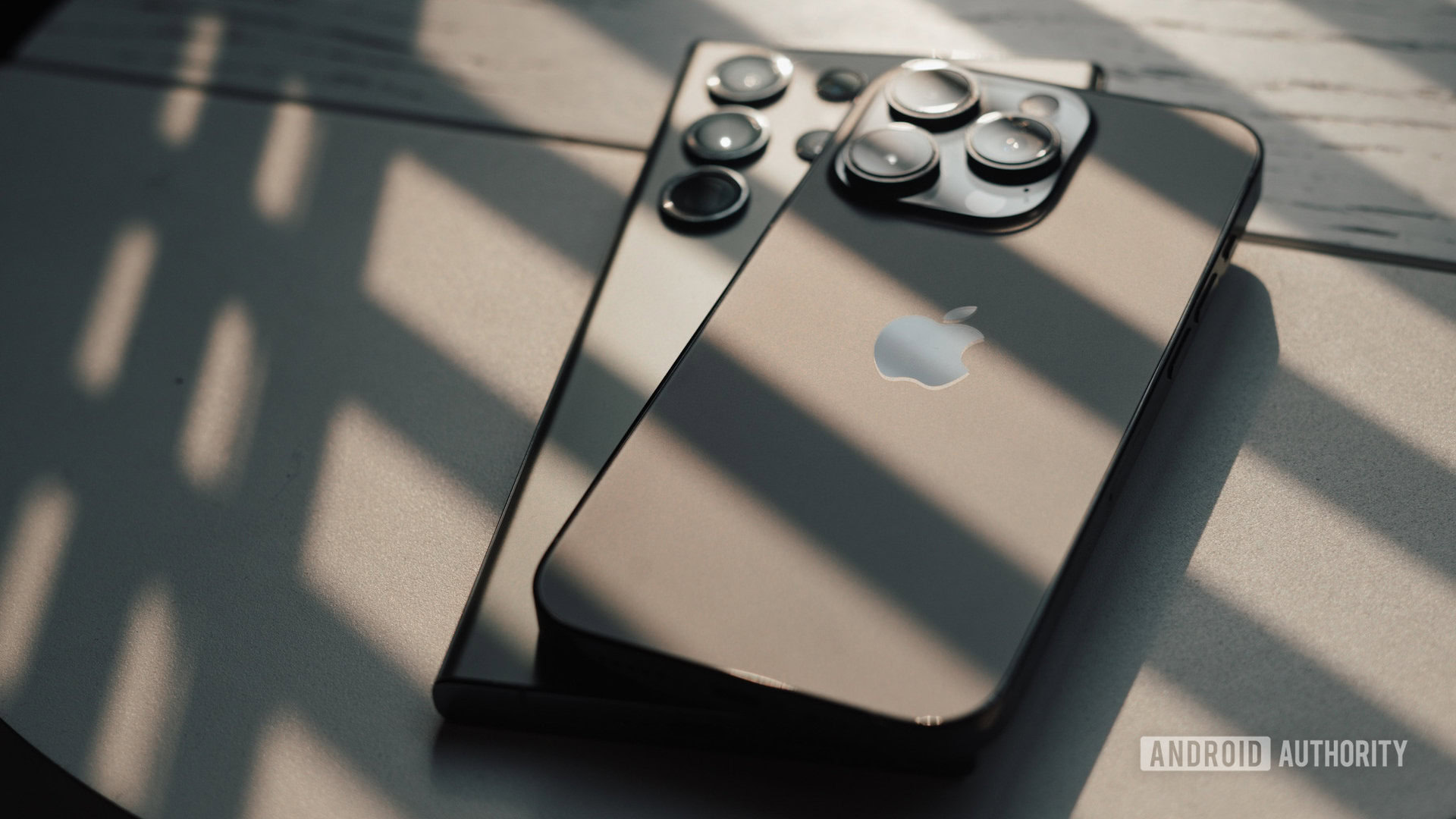The arrival of the Apple iPhone 15 invites plenty of Android comparisons and talking points, none more so than in the chipset department. With a new A17 Pro processor onboard — Apple has ditched the Bionic moniker — we could be looking at a new performance champion, and we’re eager to see how the A17 Bionic compares to the Snapdragon 8 Gen 2 powering today’s best Android phones.
Before diving into the specs, it’s worth noting that Apple no longer packs its more powerful chipset into every new iPhone. The A17 Pro is exclusive to the iPhone 15 Pro and Ultra. The regular and Plus versions use the A16 Bionic that powered 2022’s iPhone 14 Pro and Pro Max. That chip is still plenty powerful, just not quite cutting edge. So let’s dive into the Apple A17 Pro vs Snapdragon 8 Gen 2.
Apple A17 Pro vs Snapdragon 8 Gen 2 specs
As usual, Apple’s latest CPUs are built on its customized take on the Arm architecture. That means CPU cores that you won’t find in the Android space, or anywhere else, which lends the chip a more unique performance profile. As usual, Apple’s A17 Pro features two powerhouse cores and four energy-efficient cores, but Apple hasn’t named them this year.
The Snapdragon 8 Gen 2 uses licensed Arm CPU components: a single Cortex-X3, four Cortex-A715s, and four Cortex-A510s. This setup looks a little more dynamic in the power department and features more cores, but Apple’s last-gen chip already holds a slim single-core and multi-core score advantage, according to benchmarks.
| A17 Pro | Snapdragon 8 Gen 2 | |
|---|---|---|
|
CPU Config |
A17 Pro
2x High-performance |
Snapdragon 8 Gen 2
1x 3.19GHz (Cortex-X3) |
|
GPU |
A17 Pro
6-core (Apple-designed) |
Snapdragon 8 Gen 2
Adreno 740 |
|
AI |
A17 Pro
16-core Apple Neural Engine |
Snapdragon 8 Gen 2
Hexagon DSP |
|
RAM support |
A17 Pro
LPDDR5 |
Snapdragon 8 Gen 2
LPDDR5X |
|
Video |
A17 Pro
HEVC, AV1 decode |
Snapdragon 8 Gen 2
HEVC, AV1 decode |
|
4G/5G Modem |
A17 Pro
X70 LTE/5G |
Snapdragon 8 Gen 2
X70 LTE/5G |
|
Other networking |
A17 Pro
Bluetooth 5.3 |
Snapdragon 8 Gen 2
Bluetooth 5.3 |
|
Process |
A17 Pro
TSMC 3nm |
Snapdragon 8 Gen 2
TSMC 4nm |
Apple was shy on the specifics of the A17 Pro CPUs but touts a rather conservative 10% performance boost over last generation’s Apple A16 Bionic and up to 3x better performance per watt energy efficiency gains for the little cores. Based on last-gen, that would push the A17’s CPU capabilities notably beyond the Snapdragon 8 Gen 2 (we’ll see exactly how far when we benchmark the chip ourselves) and will obviously provide a good rivalry for the much anticipated Snapdragon 8 Gen 3.
GPU-wise, Apple has some significant changes here. The number of GPU cores moves from five to six, and other architecture changes have produced an up to 20% overall boost to graphics performance. Still, Qualcomm’s Adreno 740 took the lead last year, and it’ll take more than a 20% performance boost for Apple to surpass Snapdragon here. But the new iPhone has another trick up its sleeve.
After reportedly abandoning the feature last year, the A17 Pro sports hardware ray-tracing capabilities for the first time. Qualcomm’s Snapdragon 8 Gen 2, along with Samsung’s Exynos 2200 and MediaTek Dimensity 9200, also support ray-tracing graphics, so this is a case of Apple catching up. According to Apple, the move to hardware-based ray-tracing shows a 4x performance gain over the A16 Bionic’s software approach. But perhaps most impressive is that the new chip can play a small selection of modern console games too.
Ray-tracing and console titles raise the A17 Pro’s gaming prospects.
One of the other big talking points this year and next will surely be Apple’s use of TSMC’s cutting-edge 3nm manufacturing process, an improvement on the evolving 5nm processes used for its past three generations. In fact, Apple is rumored to be the only chip manufacturer using TSMC 3nm this year.
TSMC notes that moving from its 5nm to 3nm process results in a roughly 35% boost to energy efficiency, a boon for battery life, along with a 60% increase in logic density compared to N5. Similarly, MediaTek noted that it can boost performance by 18% for the same power on this node. It looks like Apple has opted for a middle-ground approach, benefiting from both a modest performance boost and battery life gains.
However, the efficiency difference from TSMC’s more advanced 5nm process (such as N4P) to N3 is likely to only be a few percentage points. The Snapdragon 8 Gen 2 might not be too far off the pace in this regard. However, with Apple reportedly the only one willing to pay the fabrication costs, it’s expected that even the next-gen Snapdragon 8 Gen 3 will be built on a next-gen 4nm node rather than 3nm, lending Apple a density and efficiency advantage into 2024.
Apple has closed some other gaps too, with Bluetooth 5.3 connectivity, the same Snapdragon X70 5G modem, and AV1 decoder support as this year’s Android phones. But the Snapdragon 8 Gen 2 stays in front with Wi-Fi 7 support, 8K video recording capabilities, and options for lossless audio via aptX.
Apple A17 Pro vs Snapdragon 8 Gen 2 benchmarks
We don’t have the iPhone 15 Pro with an A17 Pro inside to run benchmarks against the Snapdragon 8 Gen 2 just yet. However, we can plug in some best-case-scenario estimates thanks to Apple’s performance forecasts. But take the below with a pinch of salt.
While these are only estimates, we can draw two key expectations here. Last year’s A16 Bionic CPU setup was already out in front, so we expect Apple to extend its CPU lead beyond the Snapdragon 8 Gen 2. The roles reverse on the graphics side; we expect Snapdragon to keep its nose out ahead despite Apple’s gains. That said, real-world game optimizations and sustainable performance might make this a closer run contest than this benchmark estimation suggests.
Apple A17 Pro vs Snapdragon 8 Gen 2: What to expect

Dhruv Bhutani / Android Authority
With notable CPU and GPU gains, a jump to a more efficient process node, and several new features (such as AV1 decoding and ray tracing), the A17 Pro is shaping up to be one of the iPhone’s more meaningful upgrades in recent years. However, Apple is a generation ahead on its chipset cadence. Android smartphones will see their own boost with the arrival of Qualcomm’s Snapdragon 8 Gen 3 and Google’s Tensor G3.
We won’t know precisely how far Apple has pushed the envelope until we’ve had time to benchmark the chips ourselves. Until then, it’s sufficient to say that customers won’t be disappointed with flagship processor performance, no matter which side of the Android/iOS divide they’re on.



